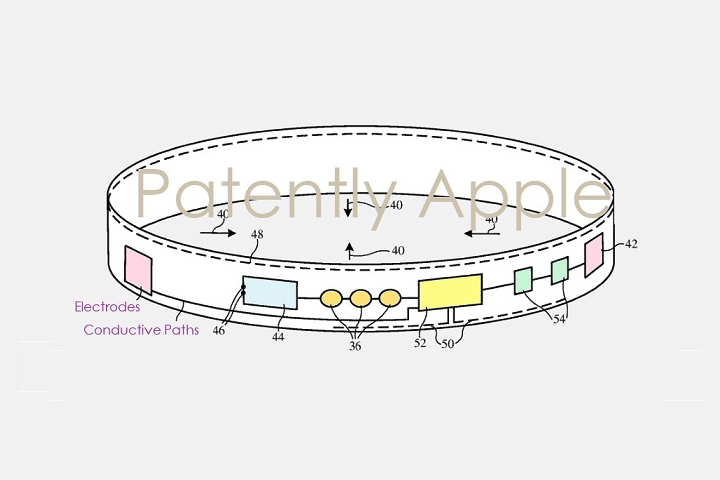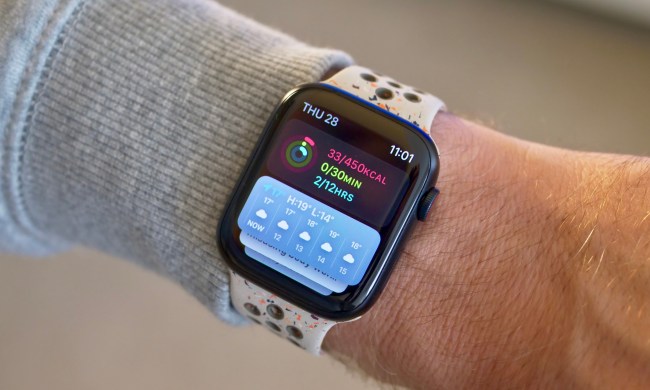A patent filing has revealed Apple may be investigating how to integrate health monitoring technology into clothing. Filed with the U.S. Patent and Trademark Office, it shows a soft, stretchable band potentially designed to be woven into fabric, and could also contain sensors to monitor the body’s vital signs.

What would the band look for? Think about it as the next stage on from what’s possible with the Apple Watch. Expect heart rate sensing and an electrocardiogram feature, in addition to blood pressure, blood sugar levels, blood oxygen levels, respiration rates, and additional fitness-orientated measurements including activity and step count.
The filing indicates that the band will connect wirelessly to another device, likely for control and data syncing, which could mean a future iPhone or Apple Watch. However, there is some evidence the band will have touch-sensitive sections for user control when it’s being worn, and also the potential for voice control through a microphone, too.
The band’s stretchable material is key to making it work properly, as it will need to be in almost constant contact with the skin to accurately take the important measurements. Whether Apple sees this as a compression-style undergarment, rather than a casually worn t-shirt, is not clear. Durability is another concern. The patent suggests the fabric, circuitry, and power capacitors for energy storage used will be suitable for washing at home, without removing components first.
Since the introduction of the Apple Watch, Apple has realized the potential in health monitoring technology, and has gone on to introduce important new features to the Watch — including an ECG, fall detection, and more. Apple has also invested in research with the medical community to help people monitor, manage, and diagnose health and fitness conditions. A smartwatch enables many of these features, but its size and location on the body limits the amount it will eventually be able to do. Smart clothing is the logical next step.
The patent filing does not guarantee Apple will ever make smart clothing, or integrate a stretchable health monitoring band like the one described into a garment. However, well-known engineer Daniel Podhajny, responsible for Nike’s FlyKnit material, is listed as one of the contributors to this particular patent, indicating it has a potentially higher chance of going beyond the “idea” phase.



